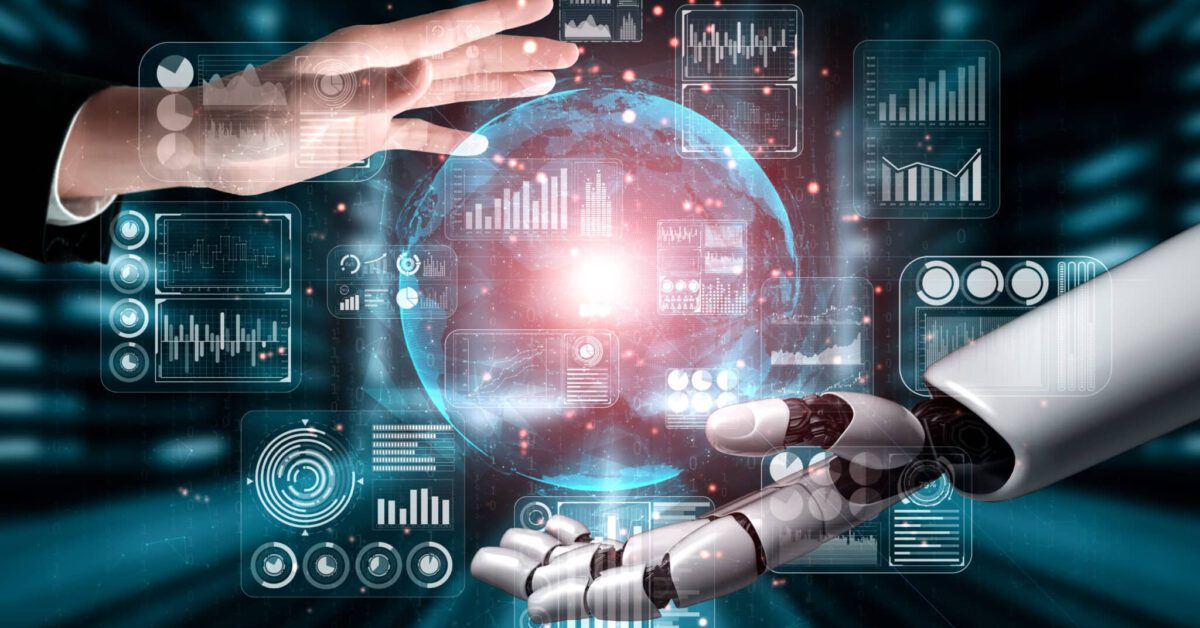
In the realm of service industries, where complex assets such as industrial equipment, automotive systems, and construction machinery play a crucial role, a transformative technology has emerged: generative artificial intelligence (AI). This advanced form of AI holds the potential to revolutionize these industries by augmenting human capabilities, streamlining processes, and even replacing certain tasks. So, fasten your seatbelts and get ready to explore the remarkable capabilities of generative AI, as we embark on a journey that parallels the fictional character Jarvis from Marvel’s “Iron Man.”
Building the foundation: Data quality and implementation
Implementing generative AI in service industries can be a longer and more arduous journey than anticipated. Just like Tony Stark’s meticulous efforts in creating Jarvis, developing a robust generative AI system requires meticulous attention to data quality and regulatory compliance. Industries with stringent quality and regulatory requirements, such as manufacturing with tight tolerances or aerospace and medical devices, demand the utmost precision and reliability. Tony likely spent a significant amount of time gathering, training, and validating data to ensure Jarvis‘ accuracy and reliability before unleashing its full potential.
Augmenting human capabilities: The power of collaboration
Generative AI has the power to augment human professionals, such as technicians, engineers, and mechanics, in numerous ways, enhancing their productivity and expertise. Imagine a world where this technology assists in the documentation of work orders, conducts quality reviews, and provides valuable knowledge for troubleshooting complex issues. It can optimize supply chains and pricing, improving operational efficiency and profitability. This symbiotic relationship between humans and generative AI mirrors Tony’s interaction with Jarvis throughout the Marvel movies. Tony consistently relies on Jarvis for input, answers, and scenario analysis, leveraging the technology to enhance his capabilities and make informed decisions.
Examples of generative AI in service industries
1. Streamlining maintenance and repairs: By analyzing vast amounts of sensor data from industrial equipment, automotive systems, and machinery, generative AI can identify patterns and predict potential failures. It generates maintenance schedules, flags components that require attention, and even suggests repair procedures. This proactive approach minimizes downtime, reduces maintenance costs, and optimizes asset performance.
2. Intelligent supply chain management: Consider a distribution center managing millions of SKUs. Generative AI analyzes historical data, market trends, and customer demand to optimize inventory levels, replenishment schedules, and distribution routes. It forecasts demand and dynamically adjusts inventory thresholds, ensuring efficient supply chain management and preventing stockouts or excess inventory.
3. Precision quality control: In industries where precision matters, such as automotive manufacturing or aerospace, generative AI performs quality inspections with exceptional precision. It detects defects, anomalies, or deviations in real-time, improving product quality and reducing waste. Each component meets the stringent quality standards required for safe and reliable operations.
4. Intelligent asset optimization: By analyzing operational data and performance metrics, generative AI optimizes asset utilization. It identifies opportunities for efficiency improvements, recommends parameter adjustments, and suggests modifications to enhance asset performance. This continuous learning from operational data maximizes the value and longevity of assets.
5. Personalized customer support: Generative AI analyzes customer data, purchase history, and service records to provide personalized recommendations and support. It assists customer service representatives in addressing inquiries, troubleshooting issues, and suggesting tailored solutions. This personalized approach enhances customer satisfaction and loyalty, leading to long-term business growth.
6. Advanced predictive analytics: Leveraging historical data and predictive modeling techniques, generative AI forecasts future trends, demand patterns, and market conditions. It empowers service industries to make informed business decisions, optimize pricing strategies, and adapt to changing market dynamics. By staying ahead of the curve, businesses gain a competitive edge and seize new opportunities.
Generative AI has emerged as a game-changing technology with the potential to revolutionize service industries. From streamlining maintenance and repairs to optimizing supply chains, its applications are vast and impactful. Just like Tony Stark’s visionary creation of Jarvis, service industries have the opportunity to unlock a world of possibilities by embracing generative AI. So, fasten your own metaphorical suit of armor and explore the potential of generative AI in unleashing new levels of efficiency, productivity, and customer satisfaction within your own industry.
As we conclude our journey through this new world, remember that the real power lies in the combination of human ingenuity and the remarkable capabilities of AI. By embracing this partnership, service industries can pave the way for a future where innovation knows no bounds.